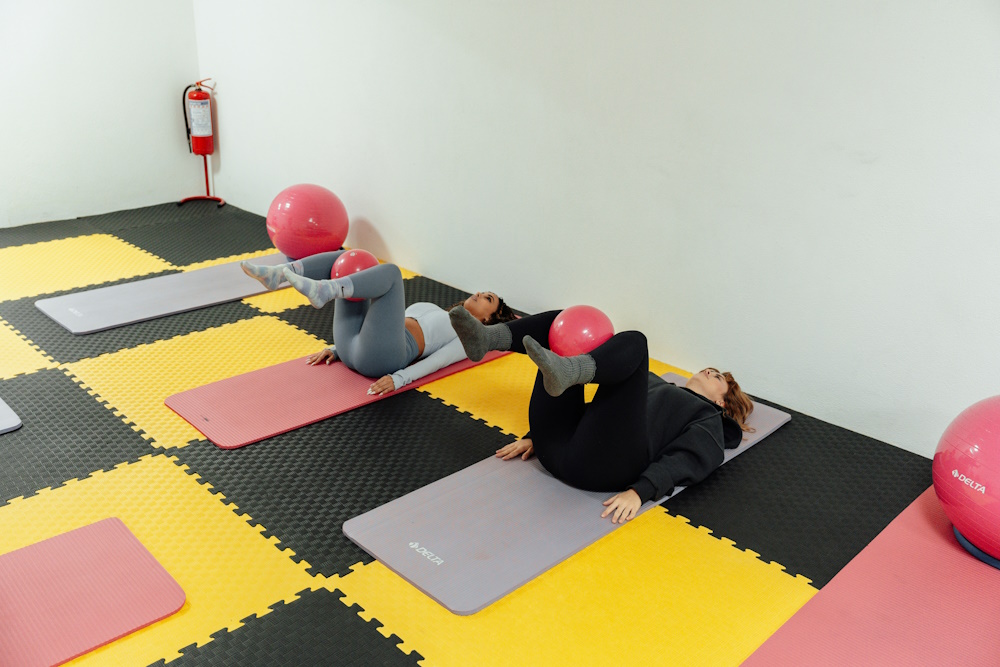When it comes to choosing a fitness regimen, individuals are often faced with an array of options, each promising unique benefits. Pilates, known for its focus on core strength, flexibility, and mindful movement, stands out in the fitness world. In this discussion, we’ll compare Pilates to other forms of exercise, exploring the differences, potential advantages, and why Pilates can be an excellent choice for many.
How is Pilates Different from Other Exercises?
Pilates distinguishes itself from many other forms of exercise through its core principles, approach to movement, and targeted benefits:
1. Core Emphasis: While many exercises work the core, Pilates makes it the focal point. Every Pilates exercise engages the core muscles, promoting core strength, stability, and posture.
2. Mindful Movement: Pilates is characterized by controlled, precise, and deliberate movements. It encourages a strong mind-body connection, fostering concentration and body awareness.
3. Full-Body Engagement: Pilates is a full-body workout. It incorporates a wide range of muscle groups, promoting balanced muscle development and functional fitness.
4. Low-Impact: Many traditional forms of exercise can be high-impact and stressful on joints. Pilates is low-impact, making it suitable for individuals of various fitness levels and ages.
5. Equipment Variation: Pilates can be performed with or without specialized equipment like the reformer or Cadillac, providing versatility in workouts.
6. Flexibility and Stretching: Pilates incorporates stretching exercises that enhance flexibility and joint range of motion.
7. Mind-Body Connection: Pilates places significant importance on breathing, relaxation, and stress reduction, contributing to overall well-being.
In summary, Pilates stands out for its core-centric approach, emphasis on mindful movement, and holistic benefits, making it different from many other exercise methods.
Is Pilates Better than Other Workouts?
Misconception: Pilates is better than all other workouts.
Debunked: Whether Pilates is better than other workouts depends on individual goals, preferences, and physical conditions. Here are some key considerations:
1. Core Strength and Posture: Pilates excels in building core strength and improving posture. If these are your primary goals, Pilates may be the better choice.
2. Cardiovascular Fitness: If you’re looking to improve cardiovascular fitness and burn a high number of calories, traditional cardio workouts like running or cycling might be more suitable.
3. Muscle Building: Weightlifting and resistance training are ideal for those aiming to build significant muscle mass.
4. Flexibility and Mindfulness: Pilates outperforms many workouts in terms of enhancing flexibility and fostering mindfulness.
5. Injury or Medical Conditions: For individuals with injuries, medical conditions, or joint problems, Pilates’ low-impact nature may be a better choice.
6. Variety: Cross-training, which involves combining different types of exercises, can provide well-rounded fitness benefits. In this case, Pilates can complement other workouts.
It’s important to choose a fitness routine that aligns with your goals and individual needs. There is no one-size-fits-all answer to whether Pilates is better than other workouts because each form of exercise has its unique strengths and areas of focus.
Why Pilates is Better Than a Workout?
Misconception: Pilates is superior to all other workouts.
Debunked: The idea that Pilates is better than any workout is a misconception. While Pilates offers numerous benefits, it may not be the best fit for everyone. However, there are situations in which Pilates can have distinct advantages:
1. Low-Impact Nature: Pilates is gentle on the joints, making it suitable for individuals with joint issues or those recovering from injuries.
2. Core Strength and Posture: If you’re particularly interested in improving core strength and posture, Pilates is an excellent choice.
3. Mind-Body Connection: Pilates places a strong emphasis on mindfulness and relaxation, making it a good choice for those looking to reduce stress and enhance overall well-being.
4. Flexibility: Pilates excels in improving flexibility and joint mobility, making it ideal for individuals looking to increase their range of motion.
5. Functional Fitness: Pilates promotes functional fitness, making daily activities easier and more efficient.
6. Variety: With its equipment-based and mat-based exercises, Pilates offers a variety of workouts, keeping routines interesting and engaging.
7. Versatility: Pilates can be adapted to suit various fitness levels and goals, making it accessible to a broad range of individuals.
However, it’s essential to recognize that other forms of exercise also have their merits. Traditional strength training, cardiovascular workouts, and sports can provide benefits that Pilates may not offer. The choice between Pilates and other workouts ultimately depends on your personal goals and preferences.
Is Pilates the Best Form of Exercise?
Misconception: Pilates is the best form of exercise for everyone.
Debunked: There is no one-size-fits-all answer to whether Pilates is the best form of exercise because the concept of “best” varies among individuals. Pilates is undoubtedly a valuable and effective form of exercise, offering specific benefits, but it may not be the best choice for everyone, especially those with different fitness goals.
The “best” exercise is the one that aligns with your individual goals, physical condition, and preferences. It’s worth exploring various forms of exercise to find what works best for you. Whether it’s Pilates, cardio workouts, strength training, or a combination of these, the key is to stay active and choose a routine that you enjoy and can maintain.
In summary, Pilates distinguishes itself from other forms of exercise through its core-centric approach, mindful movement, and holistic benefits. Whether Pilates is better than other workouts depends on individual goals and preferences. While Pilates offers unique advantages, it may not be superior to all other forms of exercise. The “best” exercise is the one that aligns with individual goals and physical conditions, and it’s worth exploring various options to find what works best for you.
